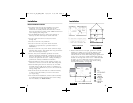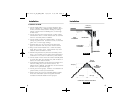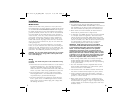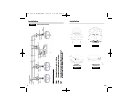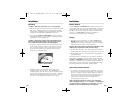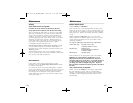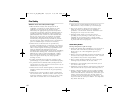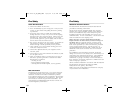
Additional Recommendations
The National Fire Protection Association’s Standard 72
provides the following information:
Smoke alarms shall be installed outside each separate
sleeping area in the immediate vicinity of the bedrooms
and on each additional story of the family living unit,
including basements and excluding crawl spaces and
unfinished attics. In new construction, a smoke alarm also
shall be installed in each sleeping room.
Smoke Detection - Are More Smoke Alarms Desirable?
Required number of smoke alarms (as shown in Image 1A
and Image 1B): The required number of smoke alarms
might not provide reliable early warning protection for
those areas separated by a door from the areas protected
by the required smoke alarms. For this reason, it is
recommended that the householder consider the use of
additional smoke alarms for those areas for increased
protection.
The additional areas include the basement, bedrooms,
dining room, furnace room, utility room, and hallways not
protected by the required smoke alarms. The installation
of the smoke alarms in the kitchen, attic (finished or
unfinished), or garage is normally not recommended, as
these locations occasionally experience conditions that can
result in improper operation.
Alarms should be installed in accordance with the National
Fire Protection Association’s Standard 72 (NFPA,
Batterymarch Park, Quincy, MA 02269).
Notify your local fire department and insurance company
of your smoke alarm installation.
Alarm Exit Procedure
• Alert small children in the home.
• Leave immediately by your escape plan. Every second
counts, so don’t waste time getting dressed or picking
up valuables.
• In leaving, don’t open any inside door without first
feeling its surface. If hot, or if you see smoke seeping
through cracks, don’t open that door! Instead, use your
alternate exit. If the inside of the door is cool, place
your shoulder against it, open it slightly and be ready to
slam it shut if heat and smoke rush in.
• Stay close to the floor if the air is smoky. If possible do
not breathe too deeply to avoid smoke inhalation.
Breathe through a cloth (preferably wet) if possible.
• Once outside, go to your selected meeting place and
make sure everyone is there.
• Call the fire department from your neighbor’s home -
not from yours!
• Don’t return to your home until the fire officials say that
it is all right to do so.
• There are situations where a smoke alarm may not be
effective to protect against fire as stated in the NFPA
Standard 72. For instance:
- smoking in bed;
- leaving children unsupervised;
- cleaning with flammable liquids, such as gasoline.
NRC Information
Ionization type smoke alarms use a very small amount of
a radioactive element in the sensing chamber to enable
detection of visible and invisible combustion products.
The radioactive element is safely contained in the chamber
and requires no adjustments or maintenance. This smoke
alarm meets or exceeds all government standards. It is
manufactured and distributed under license from the U.S.
Nuclear Regulatory Commission.
F i r e Safety
F i r e Safety
2019
1235-7219-02_AC_MAN_ENG 10/5/04 4:36 PM Page 18





